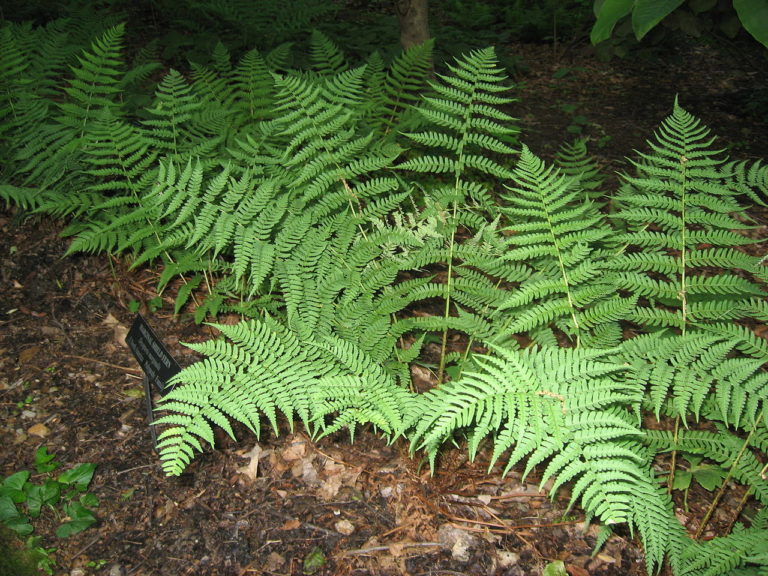Marginal Wood Fern is a smallish ( 1.5 – 2 foot high), well behaved, evergreen fern found in shady, rocky slopes in most of eastern U.S. In North Carolina, is is found in mountain counties and a few piedmont counties. It is clump-forming and non-colonizing, propagated by root crown division and by spores.The fiddleheads of Marginal Wood Fern arising in spring are golden brown and furry, expanding into handsome, leathery, deeply green, arching fronds. In the garden it plays very well with wildflowers and offers cover for small critters. Marginal Wood Fern can thrive in both moist/well drained and somewhat dry locations that are shady or semi-shady. The common name of Marginal Wood Fern refers to the location of the sori or spore-containing structures on the very margins of the underside of the fronds.
NURSERY HOURS
Wednesday: 10-4 Thursday: 10-6 Friday-Saturday: 10-4 Sunday: 12-4
Dryopteris marginalis

Key Info
Scientific Name: Dryopteris marginalis (L.) Gray
Common Names: Marginal Wood Fern, Marginal Shield Fern, Leatherwood Fern, Eastern Wood Fern
Family Names: Dryopteridaceae (Wood Fern Family)
Leaf Retention: Evergreen
Bloom Times: n/a
Flower Color: n/a
Special Characteristics: Tolerates dry conditions, Reported to be deer resistant, Tolerates cold, Tolerates shade, Evergreen
Additional Info
Habit: The vase-shaped clump grows from rhizome tissue which may protrude a few inches from the soil, and from which rnon-colonizing roots extend radially. Often, the dead leaves will accumulate beneath the plant.
Height: 2' - 2.5'
Spread: 1.5 - 2'
Soil Conditions: Prefers moist, rich, humusy, acidic soils.
Leaves: The leaves or fronds are leathery, grayish-green, deeply cut, 15-25" wide x 10" wide, evergreen, and pinnately compound into leaflets and again into lobed subleaflets. The points of the leaflets are gracefully curved towards the tip of the leaf. The stipe, which is scaley, is ~1/4 the length of the frond.
Flowers (or reproductive structures: Marginal Wood Fern reproduces by spores. The sori are located at the edges or margins of the lobed subleaflets (undersides); hence the common name.
Fruit: reproduces via spores
Natural Distribution: Moist woods, crevices in rocky ledges and ravines.
USDA Hardiness Zone: 3 to 8
USDA Wetland Indicator Status in NC: FACU
Pollination: n/a
Wildlife Connections: Tolerates rabbits, provides cover for toads and lizards and slalmanders and other small critters.
Propagation: By division or from spores.
